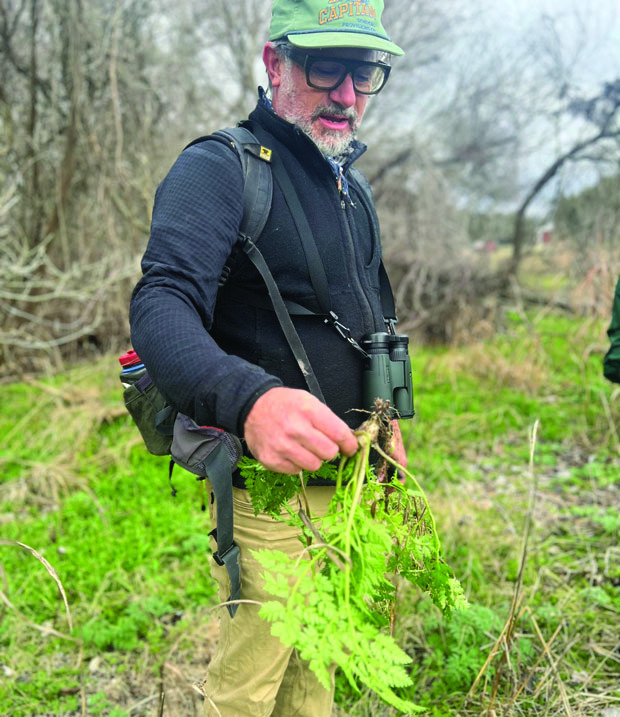Editor’s Note: The Boerne Star sent freelance writer Cori Smelker on the “ Winter Woodlands Riparian Walk” through the Cibolo Nature Center on Jan. 27. The following is a recap of her adventure.
Unlike the riverside picnic with riparian entertainment experienced by Mrs. Bucket et al., from “Keeping Up Appearances” fame, the Winter Woodlands Riparian Walk hosted by Land Manager David Touchon was accident free and highly informative.
Jan. 27 was chilly, but six of us met up with Touchon at the Cibolo Nature Center at 9 a.m. for a ramble along the creek. One person, Karen, even drove in from Kerrville as she was looking at volunteering with Boerne’s city parks.
Kathy Webster, representing the Hill County Chapter of Texas Master Naturalists, offered her wisdom in conjunction with Touchon’s. Texas Master Naturalists also provide free resources and advice to homeowners who want to restore their land and gardens to their native state.
We started on the side of the center closest to the city playing fields. This is where the creek is widest and where the Cottonwoods are plentiful.
If you have ever walked the creek during the summer and heard rustling and rattling, look no further than these towering trees. In Boerne, where we do not really experience a fall, the Cottonwoods are the exception; their leaves turn to burnished gold and create a majestic frame around the creek. Cottonwoods and sycamores are almost always seen together, and Boerne is no exception.

Touchon said that in the winter months, and especially after the most recent freeze, everything that is not an evergreen should be dead. If we see anything that is green, he said, it is most likely an invasive species.
The first thing he showed was a poisonous hemlock, which superficially resembles a carrot and is, in fact, part of the carrot family. The tops were bright green and easily seen in the undergrowth alongside the creek.
Hemlock can be encountered anywhere and, if seen in a residential garden, is easy to remove. As a precaution one should wear gloves when pulling hemlock as it can cause blistering. One can also spray vinegar on it.
As we moved to the west side of the creek, the vegetation changed. An old pecan tree was almost engulfed in grapevine. Although grapevine is native, it can be a nuisance and stunt the growth of other vegetation.
When cutting it down, be careful to ensure it’s not poison ivy. There are a couple of ways to differentiate between the two. Poison ivy will always grow close to the tree, and it has fine hairs, unlike the grapevine.
Webster noticed the Japanese Honeysuckle was growing along the creek as well. She said the honeysuckle can be purchased from a nursery, but it can quickly grow out of control and take over.
One of the “beaches” has been transformed into an oasis for river life -- including fish, red-eared slider turtles, hawks, and Double-crested Cormorants. Touchon said he has seen an increase in vegetation and wildlife.
Winter is the best time to see what is native or not and, most often, the best time to rid the landscape of alien species.
Touchon said he and his land management team are working to create an environment that is both visitor- and eco-friendly.
To learn more about the vital work Touchon and his team are doing and how they can help you improve your own living space, head on over to Cibolo Nature Center at 140 City Park Road, Boerne.







Comment
Comments